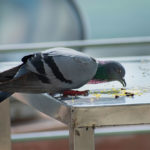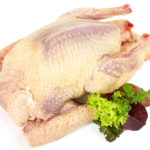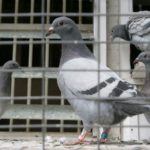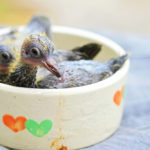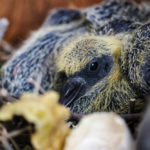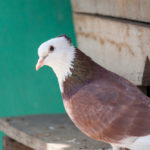Pigeons are everywhere, you can hardly go out in a town or city without seeing a flock of them. But have you ever seen a baby pigeon? Probably not. So where are they all?
And what do they look like? Let’s take a deep dive into everything you need to know about baby pigeons and why we never see any.
What Does A Baby Pigeon Look Like?
Newly hatched pigeons are called squabs. These pigeons are too young to fly and are called this until they are around 4 weeks old.
Squabs have pink or dark skin with a patchy yellow covering that will eventually develop into feathers. The beak, wings, and feet are much bigger than the rest of the body, but they grow into these features as they get larger.
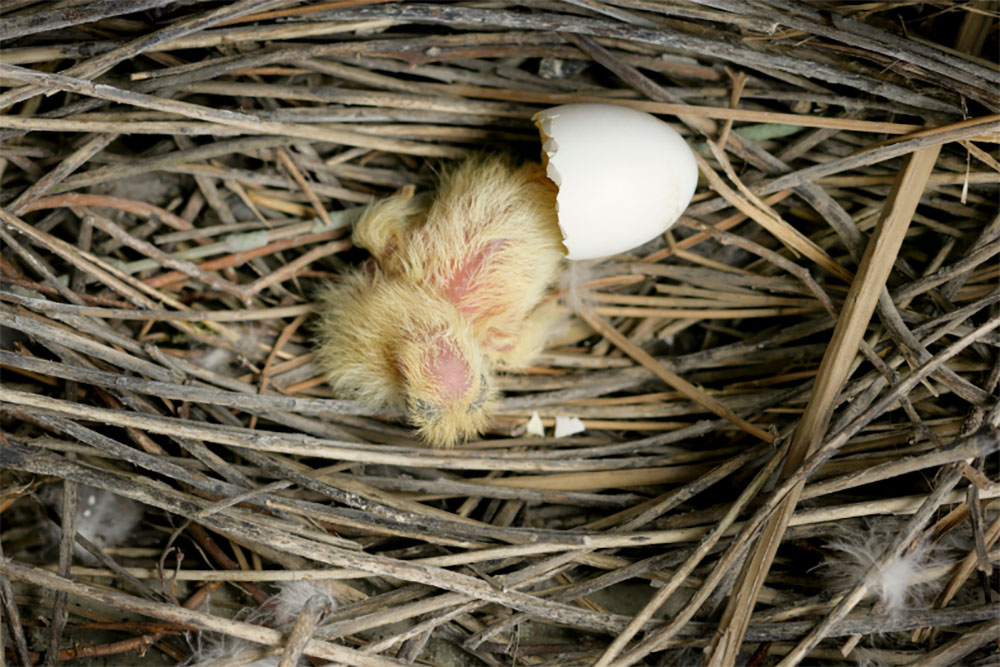
The beak is usually pinkish in color, although it can sometimes be darker. The color of the feet is slate grey.
Hatchlings are born undeveloped and reliant on their parents for care and sustenance. When babies are born, their eyes are closed.
Their eyes will open around 4-5 days after they hatch. They also sleep on their backs, lift their heads and open their bills once a week.
Newly hatched pigeons are only 5cm long and weigh 15g on average. They quickly put on weight though as they increase their mass by 4-8 grams a day, reaching a weight of between 270-350 grams at 30 days old.
Why Do We Never See Baby Pigeons?
It’s very uncommon to see baby pigeons because they stay in the nest for much longer than other birds, usually around 30 days.
When they fledge, they have plumage that is virtually identical to that of adult birds.
While it’s not impossible to tell a younger pigeon apart from an older one, many people won’t notice the difference in the feathers or size.
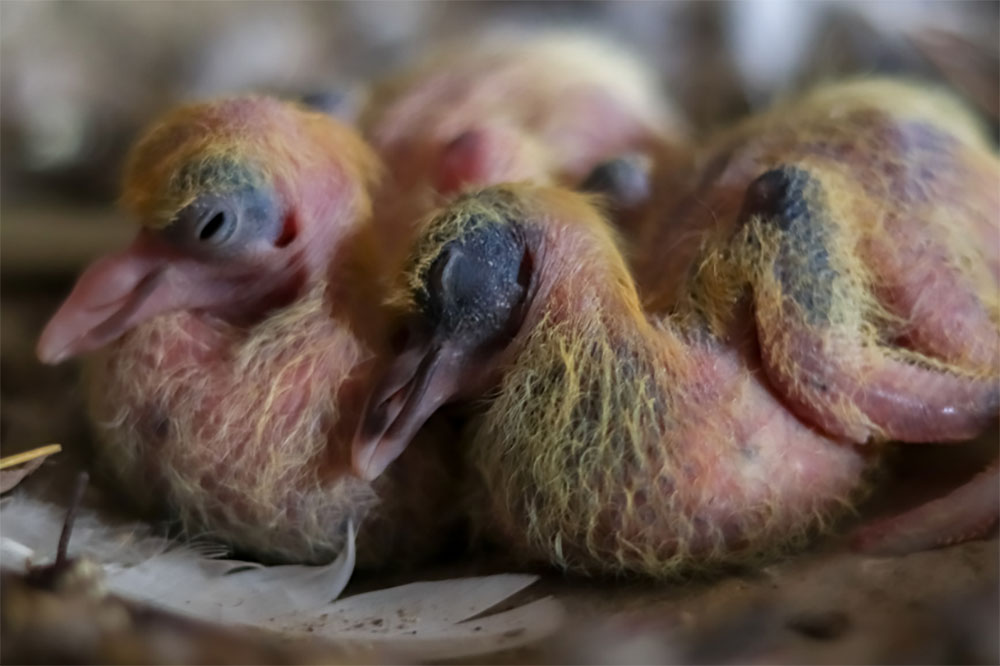
Another explanation is that pigeons prefer to build their nests in areas where they are completely hidden from people or other birds.
Church towers, beneath bridges, chimneys, and abandoned structures in towns and cities are typical examples.
In most cases, we will never see a pigeon’s real nest and, as a result, we will never see baby pigeons.
They need to nest up high comes instinctively as they are descended from rock doves. These birds nest on cliff-edges to keep their nest safe from any predators.
What Do Pigeon Eggs Look Like?
Pigeon eggs are very small, usually being around 38mm in length and 28mm in width.
The eggshell is very thin being only 0.18mm thick. The eggs are a bright white color. Most of the time the parent will lay two eggs at the same time.
Both parents are responsible for taking care of and incubating the eggs.
Usually, the male will do it from mid-morning to late afternoon, then the female will take over from late afternoon to mid-moring.
How Long Do Pigeon Eggs Take To Hatch?
The eggs will usually hatch around 16 to 19 days after they have been laid. It can happen at any time of the day, and will normally take a full 24 hours for the hatching process to take place.
If two eggs have been laid at the same time, then they will most likely also hatch at the same time as well.
Once the hatching process is completed, the parents will remove the empty eggshells from the nest.
What Do Baby Pigeons Eat?
Both male and female pigeons feed regurgitated crop milk to baby pigeons.
Crop milk, also known as pigeon milk, is secreted from the lining of the crop – a space where birds can store food before digesting it. It is very high in fat and protein.
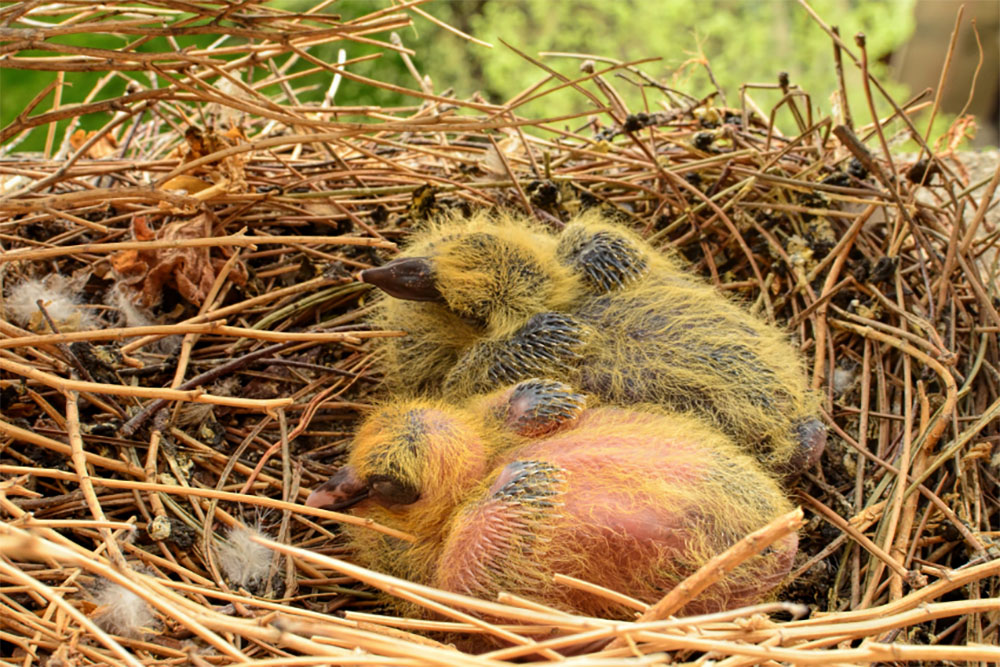
For the first four days, this is regurgitated to the fledgling birds, starting within two hours of hatching.
After that, they’ll have crop milk and seeds for another five days.
Around day 9, the young pigeons will be fed adult food. This includes seeds, fruits, and invertebrates in rare cases.
While the amount of food needed to feed a baby pigeon increases daily, after the first week one parent should be able to feed up to two baby pigeons successfully.
How Long Do Baby Pigeons Stay In The Nest?
This depends on the time of the year. In summer they will stay in the nest for 25-32 days, but in winter they may not leave for up to 45 days. In general, they are ready to start learning and practicing how to fly from 4 weeks old.
The parents are very nurturing during this stage and will often nudge their babies to try and encourage them to move around and practice flying.
What Does A Juvenile Pigeon Look Like?
Many people are confused about what baby pigeons look like, as juvenile and fledgling pigeons have plumage that looks almost identical to adult plumage.
This is because they spend so much time in the nest and are nearly completely developed when they fledge, so we never get to see them when they are young.
Depending on the species of pigeon, the cere (the white growth that sits above their beaks) on young and fledglings will be more pinkish-grey in color than the white color on adults.
They also lack the shimmering purple and green around the neck. Juvenile pigeons have medium-brown or greyish-brown eyes, but adult pigeons have yellow, orange, or reddish-orange eyes.
The feathers around the eyes of a juvenile pigeon may also appear darker than the ones seen in adults.

